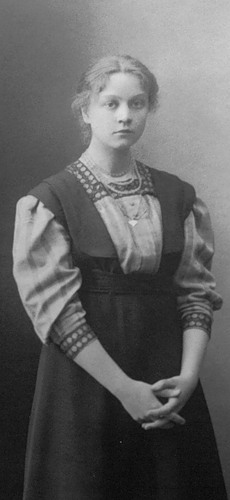Kamilla Trever on:
[Wikipedia]
[Google]
[Amazon]
 Kamilla Vasilyevna Trever (russian: Камилла Васильевна Тревер; 25 January 1892,
Kamilla Vasilyevna Trever (russian: Камилла Васильевна Тревер; 25 January 1892,
 Kamilla Vasilyevna Trever (russian: Камилла Васильевна Тревер; 25 January 1892,
Kamilla Vasilyevna Trever (russian: Камилла Васильевна Тревер; 25 January 1892, Saint Petersburg
Saint Petersburg ( rus, links=no, Санкт-Петербург, a=Ru-Sankt Peterburg Leningrad Petrograd Piter.ogg, r=Sankt-Peterburg, p=ˈsankt pʲɪtʲɪrˈburk), formerly known as Petrograd (1914–1924) and later Leningrad (1924–1991), i ...
– 11 November 1974, Leningrad
Saint Petersburg ( rus, links=no, Санкт-Петербург, a=Ru-Sankt Peterburg Leningrad Petrograd Piter.ogg, r=Sankt-Peterburg, p=ˈsankt pʲɪtʲɪrˈburk), formerly known as Petrograd (1914–1924) and later Leningrad (1924–1991), i ...
) was a Russian
Russian(s) refers to anything related to Russia, including:
*Russians (, ''russkiye''), an ethnic group of the East Slavic peoples, primarily living in Russia and neighboring countries
*Rossiyane (), Russian language term for all citizens and peo ...
historian
A historian is a person who studies and writes about the past and is regarded as an authority on it. Historians are concerned with the continuous, methodical narrative and research of past events as relating to the human race; as well as the stu ...
, numismatist
A numismatist is a specialist in numismatics ("of coins"; from Late Latin ''numismatis'', genitive of ''numisma''). Numismatists include collectors, specialist dealers, and scholars who use coins and other currency in object-based research. Altho ...
and orientalist, and a corresponding member of the Russian Academy of Sciences
The Russian Academy of Sciences (RAS; russian: Росси́йская акаде́мия нау́к (РАН) ''Rossíyskaya akadémiya naúk'') consists of the national academy of Russia; a network of scientific research institutes from across t ...
since 29 September 1943. Trever specialized in the history and culture of Transcaucasia
The South Caucasus, also known as Transcaucasia or the Transcaucasus, is a geographical region on the border of Eastern Europe and Western Asia, straddling the southern Caucasus Mountains. The South Caucasus roughly corresponds to modern Arme ...
, Central Asia
Central Asia, also known as Middle Asia, is a subregion, region of Asia that stretches from the Caspian Sea in the west to western China and Mongolia in the east, and from Afghanistan and Iran in the south to Russia in the north. It includes t ...
and Iran
Iran, officially the Islamic Republic of Iran, and also called Persia, is a country located in Western Asia. It is bordered by Iraq and Turkey to the west, by Azerbaijan and Armenia to the northwest, by the Caspian Sea and Turkmeni ...
.
Career
Trever's career began in 1918 when she was elected as a research fellow at the Imperial Archaeological Commission, which led her to begin work at the Hermitage. This first stage of her career saw her focus onSassanian
The Sasanian () or Sassanid Empire, officially known as the Empire of Iranians (, ) and also referred to by historians as the Neo-Persian Empire, was the last Iranian empire before the early Muslim conquests of the 7th-8th centuries AD. Named ...
numismatics, as well as publishing material from excavations in Mongolia. She also taught in the Iranian Studies faculty of Leningrad State University.
During the 1930s, the focus of her research moved to Hellenistic Bactria and she published a major monograph: «Памятники греко-бактрийского искусства» 'Monuments of Greco-Bactrian Art''
During the Second World War, she packed up collections at the Hermitage and was then seconded to work in Uzbekistan, where she worked at the Institute of Language, Literature, and History for two years. Following that posting she was sent to the Armenian branch of the Academy of Sciences, which led to a third major period of research examining the archaeology of the South Caucasus, which resulted in two monographs: Armenia (1953); Caucasian Albania (1959).
References
Russian orientalists Russian women historians Corresponding Members of the USSR Academy of Sciences 1892 births 1974 deaths Writers from Saint Petersburg Researchers of Slavic religion {{Russia-historian-stub Women numismatists Soviet orientalists